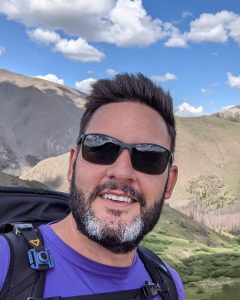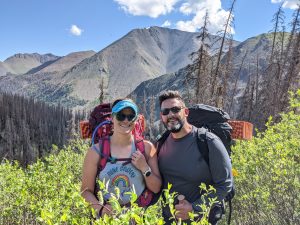Alumnus Spotlight: Cliff Weems
June 3, 2024
Alumnus Spotlight: Q&A With Cliff Weems
Cliff Weems
B.S. electrical engineering, 2015
Lockheed Martin
Sustaining Lunar Development (SLD)
Propulsion Test Engineer / Ground System CPE
ECE Alumnus Cliff Weems participated in the department’s spring “Ask an Alum” session for undergraduate students. He was able to share his experiences, from being an electrical engineering student at Mississippi State to his work background in industry.
Weems has extensive experience with Lockheed Martin, Orion, and the Artemis program, especially with the upcoming Artemis II and V missions. He is currently on the Propulsion Team on Sustaining Lunar Development (SLD), building humanity’s first cislunar transporter – a liquid hydrogen, liquid oxygen refueler for Blue Origin’s Blue Moon (MK2) Lander. He is also pursuing a master’s degree in aerospace sciences.
In addition to discussing his work, MSU involvement, co-op experience, and challenges during the Ask an Alum event, he also answered student questions and did a Q&A to share his experiences.
Why did you choose MSU’s electrical engineering program?
There was so much going for MSU’s ECE program compared to the other schools I considered. As a community college transfer student, it was important for me to know that the classes would transfer. With MSU’s articulation agreement in place with Northeast Mississippi Community College, I had nothing to worry about. Second, MSU has a highly ranked engineering school and is well respected in both academia and by major corporations. Overall, MSU is a great value for an even better engineering experience.
What advice would you share with students who transfer from a community college to MSU?
The first thing I would say is “great move.” Transferring is a solid decision and will pay dividends. Next, I would like to encourage them to get involved immediately on campus. Join your engineering discipline’s relevant society (e.g., IEEE) and start volunteering. The networking possibilities and connections made on campus are valuable long after you have left MSU.
How did your co-op experience with Chevron impact your academic and long-term goals?
Other than the ease of transferring from NEMCC, the biggest advantage that I was given in my time at MSU was the co-op program. I can’t stress enough the value of having the support of the Career Center for resume writing and review, job postings and applications, the Career Expo, and interview tips and coaching. All of this is just to get you ready to interview with top companies that want to work with MSU students. Once I decided on a co-op company, it set the trajectory of my career and exposed me to real engineering experience that pushed me to want to learn more in school before I finished my degree and to think about my future career plans. Though I chose to work full time with Chevron after graduation, I felt prepared to make that decision with the support of MSU, the ECE Department, and the Career Center.
How did your undergraduate education and work experience impact your decision to further your knowledge in graduate school?
My undergraduate experience in ECE really prepared me for anything. The rigor of the engineering experience there impacted my decision to pursue further education by giving me the confidence that I not only had the “real world” experience necessary to excel, but also a solid foundation of fundamentals that would extend to any engineering coursework. In fact, even though I initially was a bit concerned about pursuing a master’s in aerospace engineering sciences, I soon found that I was well prepared for the additional rigor of a master’s outside of my bachelor’s.

Describe your work with Lockheed Martin, Orion, and the Artemis program especially in terms of how you are contributing to the upcoming Artemis II and V missions.
I joined Lockheed Martin Space as the Orion Cockpit Master Systems Integrator in May 2022. In that role, I supported the hardware and software team developing and delivering the displays and controls (DAC) systems for NASA’s Orion spacecraft for Artemis II and beyond. In the role, I acted as a software development project manager and worked with various stakeholders within Lockheed Martin and NASA’s Orion program office, NASA Rapid Prototyping Lab (RPL), and NASA Human Engineering (HE).
In my most recent role, I was testing the products that I led the DAC team to develop. I was the Lockheed Martin Space representative to NASA HE, NASA Flight Operations Directorate (FOD), and the Astronaut Crew Office in the development and execution of the Human in the Loop (HITL) tests for Artemis II. The main focus of the testing is to ensure that the hardware and software user-interface meet program requirements for astronaut operability and situational awareness for this upcoming mission (and beyond). The HITL tests are conducted with astronauts since they are the ultimate users of the product, and getting to work with them was easily the coolest part of the job. Since the astronauts and my NASA HE counterparts are in Houston, I regularly traveled from Denver (my home) to Houston for collaboration with the NASA folks at Johnson Space Center (JSC).
My current role is in support of NASA’s Artemis V mission. In May 2023, NASA awarded a contract to Blue Origin for their National Team (which Lockheed Martin is a part of) to develop a sustainable human landing system that will carry astronauts to the Moon for the Artemis V mission. I am on Lockheed Martin’s Sustaining Lunar Development (SLD) Propulsion team, building humanity’s first Cislunar Transporter, a liquid hydrogen, liquid oxygen refueler for the Blue Moon sustainable human landing system. Specifically, I serve in two roles: first, I serve as the Propulsion Verification / Performance Test Engineer for SLD, coordinating and executing all verification and performance testing plans and activities and second, I act as the Ground Fill / Vent / Drain System Certified Principal Engineer (CPE), responsible for the Ground Fill concept of operations (CONOPS), launch vehicle (LV) to space vehicle (SV) commodities interface hardware, and assembly, test, and launch operations (ATLO) activities coordination prior to launch.
What is the greatest impact that your work with Orion and SLD will have?
It is humbling to know that my role and my work directly affects what hardware and software will fly on future Artemis missions. For Artemis II, understanding and helping test how crew will be using the displays and controls to fly the mission is critical. And going forward, with Artemis V, having an opportunity to help develop the future of cislunar travel and a human mission to the Moon’s surface is so exciting. No doubt there is a huge team supporting both missions, but I am proud to have a unique part in ensuring that what flies matches the customer’s strict standards.
Cliff Weems was also highlighted by Lockheed Martin’s “Voices of LM”: Human Spaceflight, Dream Job Becomes Reality (Voices of LM).
